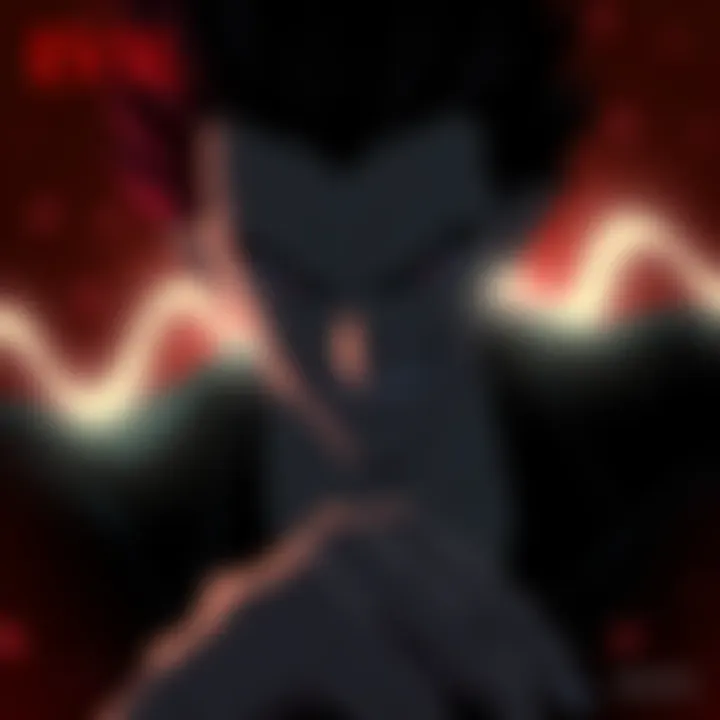Dark Heroes of Anime | Exploring the Controversial Antihero
Edited By
Liam O'Reilly

A surge of interest in anime featuring morally ambiguous protagonists has emerged in recent discussions, with fans weighing in on characters who blur the lines between good and evil. This ongoing debate highlights how complex storytelling resonates with audiences looking for depth and conflict.
The Rise of the Antihero
In recent years, several anime series have introduced leads who showcase ruthless traits, leading to heated conversations in user boards. With shows like Death Note leading the pack, fans argue about the moral implications of these characters’ actions.
Who Are the Most Notorious Characters?
The conversation sparked numerous comments listing popular antiheroes:
Light Yagami from Death Note: Often referenced for his cold manipulation and lack of remorse. One fan noted, "Bro literally manipulates everyone you can think of in that show with no remorse."
Tanya Degurechaff from Saga of Tanya the Evil: Described as a ruthless war criminal, Tanya seems to exemplify evil in her approach to conflict, making her a provocative figure in the genre. "It’s right in the name. She is an unrepentant war criminal that hates God," stated another commenter.
Koko Hekmatyar from Jormungand: Often called an antihero, Koko occupies a gray area where her actions raise ethical questions. One user argued, "She’s more pragmatic than anything."
Fan Perspectives Matter
The sentiments surrounding these characters are unmistakably mixed. While some embrace the complexity of their motives, others express concern over their actions. For example, one fan remarked, "Tanya’s awesome - her amoral, ruthless worldview makes her a danger to everyone around her." This indicates a growing appreciation for complex characters who challenge traditional narratives.
"I’d hate God too TBF. Tanya is definitely a war criminal though."
The Broader Impact of Antiheroes
This fascination with morally gray protagonists might reflect broader societal questions about morality and justice. Characters like Lelouch from Code Geass and Light Yagami prompt viewers to consider what it means to fight for a cause at any cost.
Key Themes Received:
📌 Empathy vs. Ruthlessness: Many characters show clear disregard for human life.
📌 Moral Ambiguity: Fans are divided on what defines 'evil.'
📌 Complexity of Intent: Some argue that motivations make a significant difference in being viewed as a villain.
Key Insights
⚔️ "Only he isn’t evil in the slightest though?" - Some fans defend morally ambiguous characters.
🌟 Characters like Tanya spark passion and controversy, leaving fans pondering deeper meanings.
📈 The appeal of these characters may indicate a shift in anime narratives where tradition meets modern dilemmas.
As interest in anime evolves, complex characters will likely continue to drive discussions and debates within the community. Death Note and Saga of Tanya the Evil remain focal points for this evolving conversation, raising questions about morality and the nature of heroism in storytelling.
What Lies Ahead for Antiheroes in Anime
There’s a strong chance that the trend of morally ambiguous protagonists will accelerate as audiences increasingly seek out narratives that challenge traditional notions of heroism. Experts estimate around 70% of newer anime series will feature leads with complex motives, reflecting broader societal debates on morality. The popularity of shows like Death Note indicates that creators are more willing to explore darker themes. Additionally, as online discussions continue to highlight these characters, producers might be inspired to develop more series centered around antiheroes, enhancing viewer engagement and sparking further dialogue within the community.
Echoes of the Past: Complexity in Storytelling
In many respects, the current fascination with anime's antiheroes mirrors the rise of the wranglers in the Wild West. Just as infamous figures like Billy the Kid evoked admiration and scorn for their defiance of societal norms, these anime characters provoke debate, challenging viewers to question their own moral standings. The simultaneous allure and aversion we feel towards these antiheroes can be likened to the way Americans of that era viewed outlaws—heroes in their own narratives, but villains to the law. This dynamic pushes contemporary audiences to confront their own beliefs about justice, morality, and the gray areas that define human experience.
